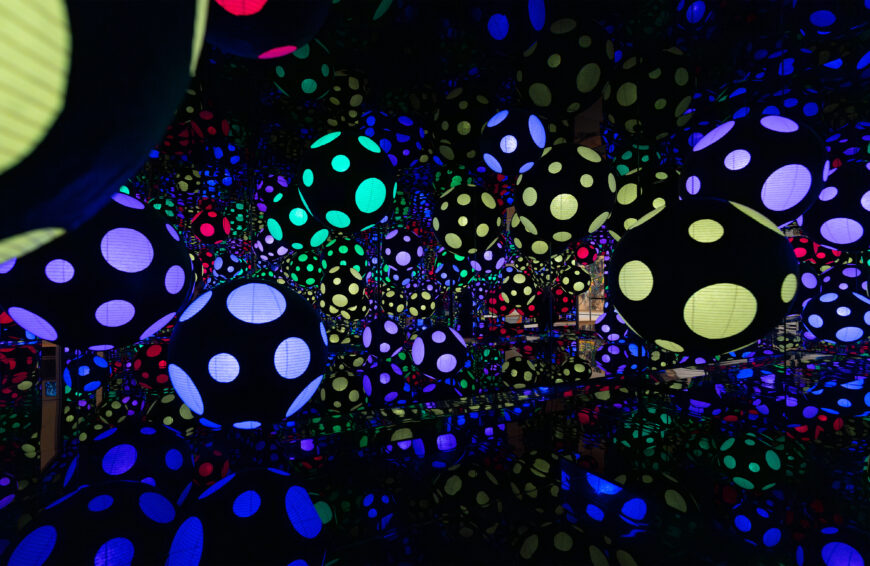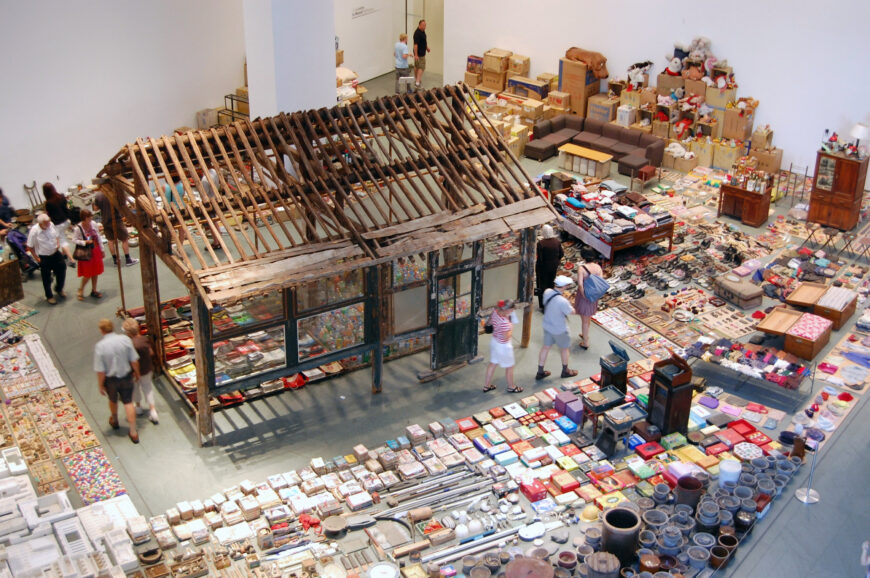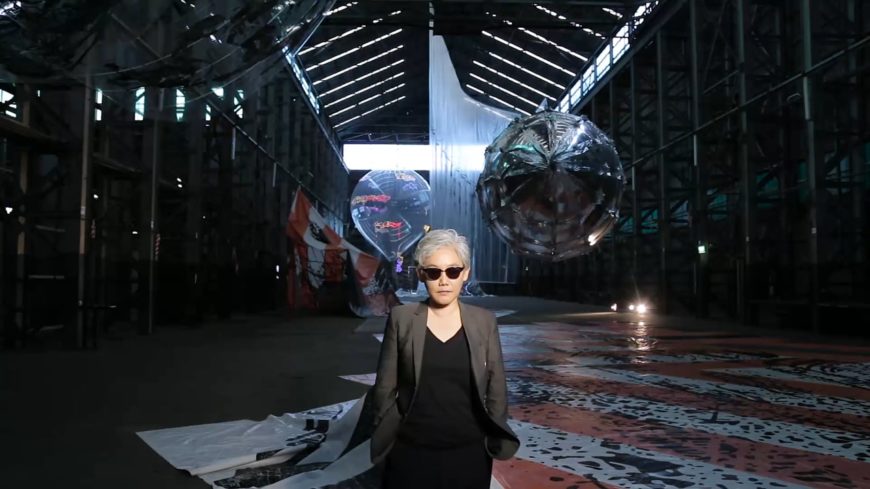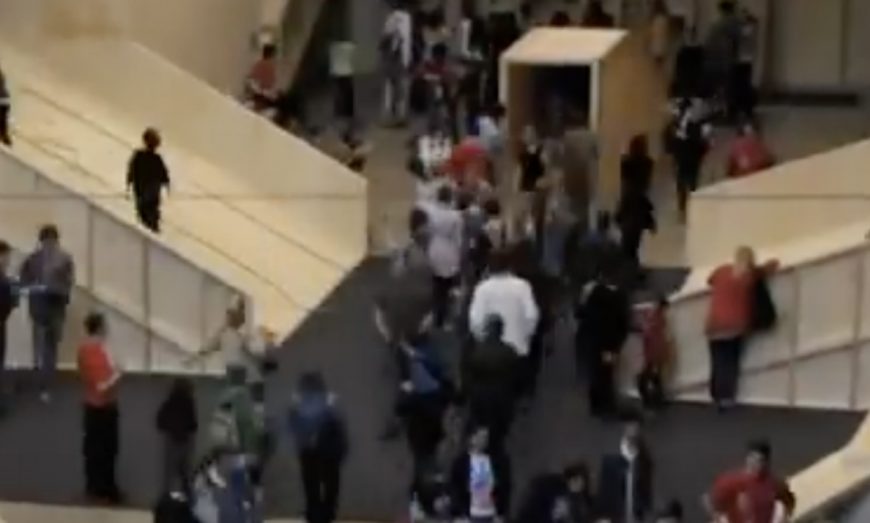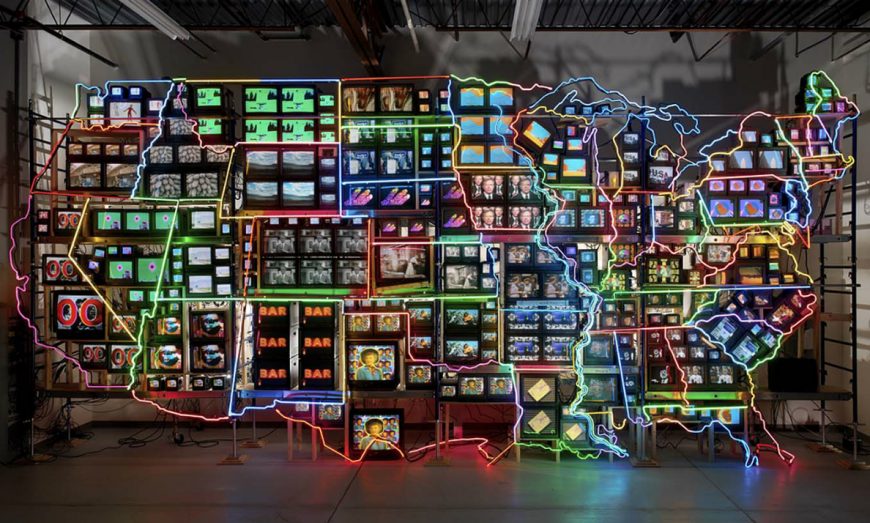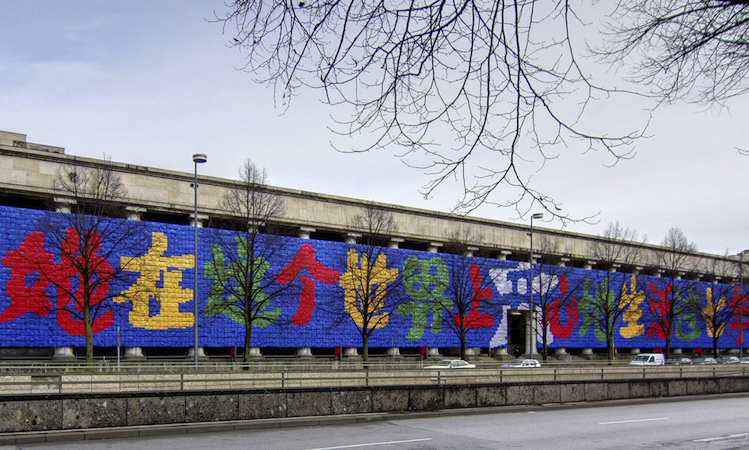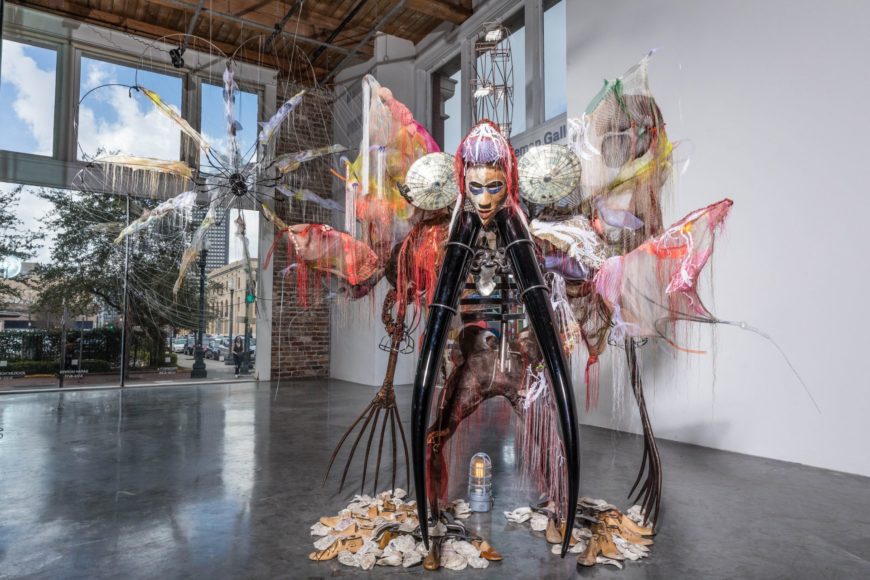
Rina Banerjee, Viola, from New Orleans-ah, an African Woman, was the 19th century’s rescue worker, a global business goods raker, combed, tilled the land of Commerce, giving America a certain extra extra excess culture, to cultivate it, making home for aliens not registered, made business of the finer, finer, had occupations, darning thread not leisure with reason and with luster, in “peek a boo” racial disguises preoccupied in circulating commerce, entertaining white folks, pulling and punching holes in barriers, place that where was once barren, without them, white banks made of mustard and made friendly folks feel home, welcomed and married immigrants from far noted how they been also starved, fled from servitude and colonial dangers, ships like dungeons, pushing coal in termite wholes, churning fire, but always learning, folding, washing, welcomed as aliens. She wandering, hosting, raising children connected to new mobilities and most unusual these movements in Treme’, New Orleans was a incubating, enmeshed embedded in this silken cocoon when she land, she’s came to be parachute mender, landed those black immigrant peddlers from Hoogali network of new comers, 2017, Murano glass horns, Indian rakes, seed beads, steel, Yoruba African mask, oyster shells, cowrie shells, Charlotte dolls, polyester horsehair trim, Korean silks, Indian silks, vintage Kashmir shawls, French wire Ferris wheel, Congolese elbow bangles, colonial mirror sconces, Japanese seed glass beads, sequins, threads, dimensions variable (Contemporary Arts Center, New Orleans)
Gauze and thin strands of fabric and thread are draped over a skeletal figure, calling to mind spider webs or perhaps molted skin. The figure’s spindly insect legs and prominent wings make it seem like at any moment it might take flight. The face looks more like a mask, with its smooth grooves and crevices, along with tints of cream, black, and red. Encountering this figure’s imposing form in person, with its long threads connecting it to a parachute-like object across the room, might cause both wonder and fear. While perhaps at first it might not be obvious, the artist, Rina Banerjee, offers the sculpture as an opportunity for critical engagement with issues of race, gender, and colonialism in the United States and South Asia. Banerjee, herself an immigrant to the U.S. from Bengal (a region that straddles the border of Bangladesh and India), follows the late nineteenth-century journey of Bengali merchants and indentured servants to the Caribbean following India’s colonization by the British. This figure is Viola, a figure that Banerjee elaborates upon in the sculpture’s 180-word title.
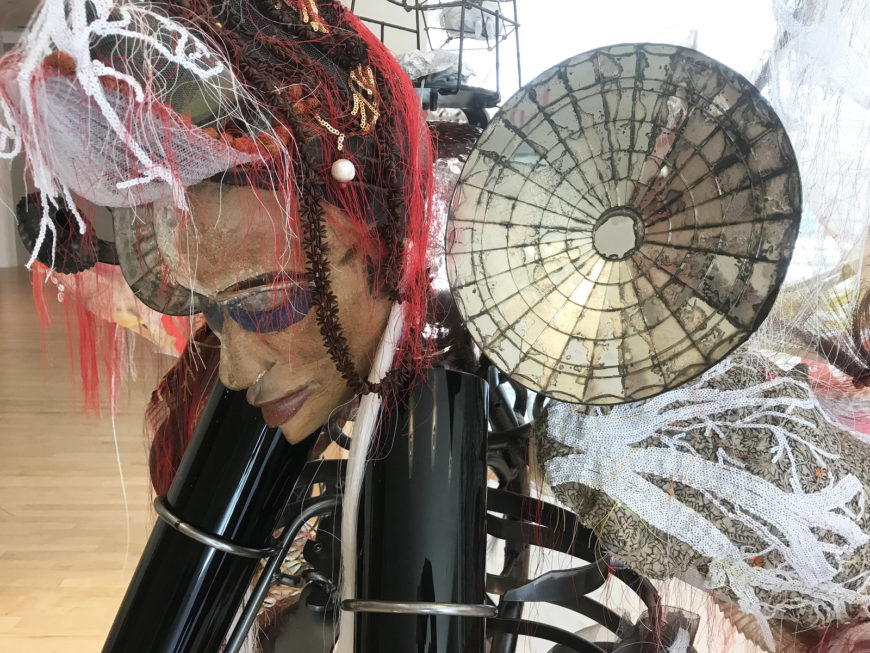
Detail, Rina Banerjee, Viola, from New Orleans-ah, 2017, Murano glass horns, Indian rakes, seed beads, steel, Yoruba African mask, oyster shells, cowrie shells, Charlotte dolls, polyester horsehair trim, Korean silks, Indian silks, vintage Kashmir shawls, French wire Ferris wheel, Congolese elbow bangles, colonial mirror sconces, Japanese seed glass beads, sequins, threads, dimensions variable (Pennsylvania Academy of the Fine Arts; photo: rocor, CC BY-NC 2.0)
Connecting threads and hidden histories
In Viola, from New Orleans-ah…, Banerjee uses a single name of an historical Black woman to reference an amalgam of multiple women, who lived in the United States during the late nineteenth century and who married tradesmen from eastern India. New Orleans in particular was home to a group of South Asian traders, all men, and predominantly Bengali Muslims. [2] These traders were colonial subjects of the British Crown and world travelers, who had come from Calcutta (now Kolkata), a major port city on the Hugli or Hooghly River—hence the title reference to “black immigrant peddlers from Hoogali.” These traders often settled in Black communities, like Tremé in New Orleans. Tremé was largely comprised of emancipated enslaved peoples and their descendants, Creole people of color with longstanding roots in the city, and recent immigrants to the city from the Caribbean and from other parts of the southern United States. These community ties allowed the Bengali merchants to build trust and enable their businesses to flourish.
The first half of the title includes imagery relating to commerce and trade, including phrases such as “a global business goods raker” and “racial disguises preoccupied in circulating commerce,” drawing out Viola’s identity as the wife of a merchant while also referencing the “circulation” of peoples in her home, as Banerjee imagines Viola offering protection to immigrants, both Black and Bengali, fleeing “servitude and colonial dangers.” Women like Viola were central to these men’s enterprises (as were the many Bengali women who remained in Calcutta).
Her title refers to the history of Bengali-Black marriage, bringing attention to the “hidden” narratives of transcultural relationships. The materials she uses in the sculpture do this as well—from the incorporation of the Indian silks and an African mask to the French wire Ferris wheel and the Victorian-era Charlotte dolls. These objects all speak of global commerce, illuminating the long history of trade and movement—of goods and of people—across India, the United States, Africa, East Asia, and Europe. They also speak of conquest centered on the journeys and migrations of both the colonized and people of color. For instance, Korean and Indian silks in the sculpture are used for their visual and tactile properties, with their diaphanous, delicate fragility and their raised, colorful embroidery patterns, but they also refer to Asian culture, history, and trade. Bengali merchants brought goods from around the world to sell in America and capitalized on late nineteenth-century fashions. Textiles and clothing comprised a good deal of this market, with handmade embroideries and rugs from India decorating the homes of wealthy and middle-class Americans. One might imagine the flowing silks draped across Viola’s form emerging from the closets of the elite and merchant classes in New Orleans, reminding us of these global connections.
Viola’s face, a mask, is tilted slightly downward and is put in dialogue with translucent silks and light-reflective beads. The mixed materiality of Viola—the Yoruba African mask, the Indian silks, and the Japanese seed glass beads—while collected by Banerjee in the present day, are all new versions of objects that might have been traded by Bengali merchants. These objects are often, in the context of contemporary art history and also in the global marketplace of the twenty-first century, dismissed as “minor,” decorative, tourist souvenirs, or cast-offs. Banerjee makes us see these objects anew, as a part of a larger, interconnected global culture, one that emerged in specific ways in New Orleans of the late nineteenth century, and continues to shape our material world as we purchase similar items to decorate our homes, not necessarily knowing exactly where everything comes from, how it is made, or how it came into our local shops.
In a nod to the Bengali merchants’ travel across the sea, and to the diasporic, Creole cultures they connect with in New Orleans, who also came across the sea, Banerjee has surrounded the base of the sculpture with sand, oyster shells, and obsolete wooden shoe forms used in cobbler shops and to keep valuable shoes in shape. These scattered wooden forms stand in for Viola’s “feet,” but she never quite depends on them, floating above the ground and disconnected from their weight. They point in all directions, and as a result perhaps signal the ways in which families and connections—for the merchants and those in the broader New Orleans community—were also multi-directional, scattered across the globe.
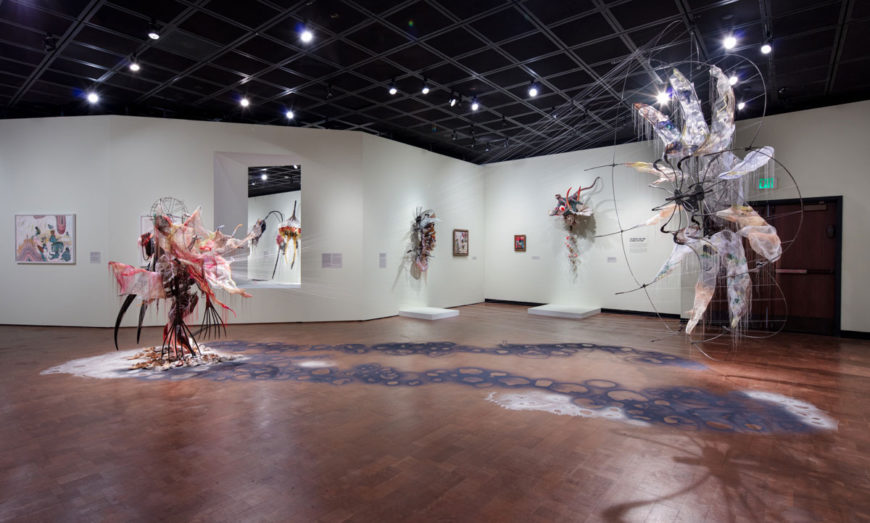
View from side, Rina Banerjee, Viola, from New Orleans-ah, 2017, Murano glass horns, Indian rakes, seed beads, steel, Yoruba African mask, oyster shells, cowrie shells, Charlotte dolls, polyester horsehair trim, Korean silks, Indian silks, vintage Kashmir shawls, French wire Ferris wheel, Congolese elbow bangles, colonial mirror sconces, Japanese seed glass beads, sequins, threads, dimensions variable (Fowler Museum; photo: Fredrik Nilson)
The title as an extension of the work of art
Viola, from New Orleans-ah, an African Woman, was the 19th century’s rescue worker, a global business goods raker, combed, tilled the land of Commerce, giving America a certain extra extra excess culture, to cultivate it, making home for aliens not registered, made business of the finer, finer, had occupations, . . .
Banerjee often describes her titles as an integral component of her work, but how can we make sense of her “extra extra excess” title for her major 2017 sculpture-installation, Viola, from New Orleans-ah…? At 180 words, the title pulls us along, much like the soaring parachute-like structure that draws our eye upward from the winged, tusked, gauzy human form. Banerjee’s title wanders and meanders yet joins seemingly disparate, stream-of-consciousness elements together. The title, like the wealth and diversity of materials in the object itself, collects a wide range of disparate ideas, places, people, and materials together.
The language and syntax of the title also feel a bit dated, as if it were written in the nineteenth century. This historical gesture puts us back in the time of the Bengali merchants and the New Orleans culture she is exploring in the work. But it also echoes nineteenth-century forms of history writing, which sometimes made leaps in imagination and connection, embellishing their stories to attract the reader’s attention. The title also echoes practices of scientific categorization in the nineteenth-century, when the disciplines of botany, geology, and ethnology emerged to try to make sense of the world’s diversity. We might connect this to Banerjee’s biography—she was a materials chemist—but it also anchors the piece further in nineteenth-century ways of knowing, allowing us to see the way the science of the time sought order in a world that evaded that ordering. Certainly Viola, the sculpture-installation, evades our own attempts to make full sense of it, each element pointing us in a new direction. Likewise, the title, in its length and complication, extends the complexity of the work rather than seeking to explain it.
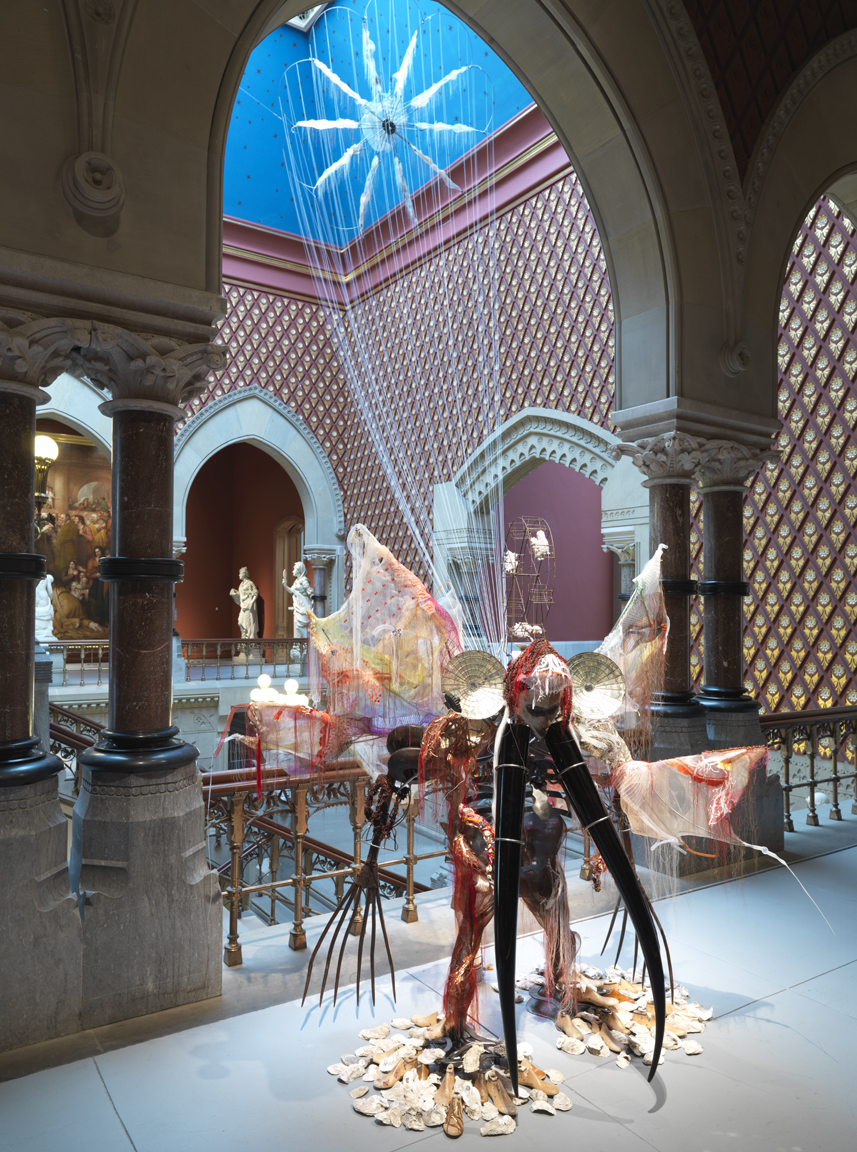
Rina Banerjee, Viola, from New Orleans-ah, 2017, Murano glass horns, Indian rakes, seed beads, steel, Yoruba African mask, oyster shells, cowrie shells, Charlotte dolls, polyester horsehair trim, Korean silks, Indian silks, vintage Kashmir shawls, French wire Ferris wheel, Congolese elbow bangles, colonial mirror sconces, Japanese seed glass beads, sequins, threads, dimensions variable (Pennsylvania Academy of the Fine Arts)
The second half of the work’s title draws upon metaphors and phrases evocative of insects.
. . . pushing coal in termite wholes, churning fire, but always learning, folding, washing, welcomed as aliens. She wandering, hosting, raising children connected to new mobilities and most unusual these movements in Treme’, New Orleans was a incubating, enmeshed embedded in this silken cocoon when she land, she’s came to be parachute mender, landed those black immigrant peddlers from Hoogali network of new comers
Banerjee compares both the immigrant and Black populations in the United States to insects and the city of New Orleans where Viola and the Bengali merchants resided to be the safe “cocoon” where these populations could find refuge, “incubate,” and grow.
This is also reflected in the visual qualities of Viola, with its gauze, fabric, and thread reading as spider web, cocoon silk, or translucent molted skin. Viola’s spindly insect legs and the figure’s multiple appendages reinforce the idea of a six- or eight-legged creature. While the wings recall moths, butterflies, and dragonflies, the parachute behind her conjures up flight. Banerjee’s depiction of Viola as a figure with insect properties also refers to nineteenth-century stereotypes of African Americans and immigrants as “pests.” [3] But Banerjee’s work, in its soaring, room-encompassing form and in its multiplicity of materials from around the world, reclaims and redirects that stereotype to a message of power. Viola takes charge of the space around her—she is both a threatening, grotesque insect and an iconic, resilient woman at the center of a multi-racial, global flow of materials and people. In her seemingly paradoxical multiple identities, Viola transforms negative traits into reclaimed strengths.


